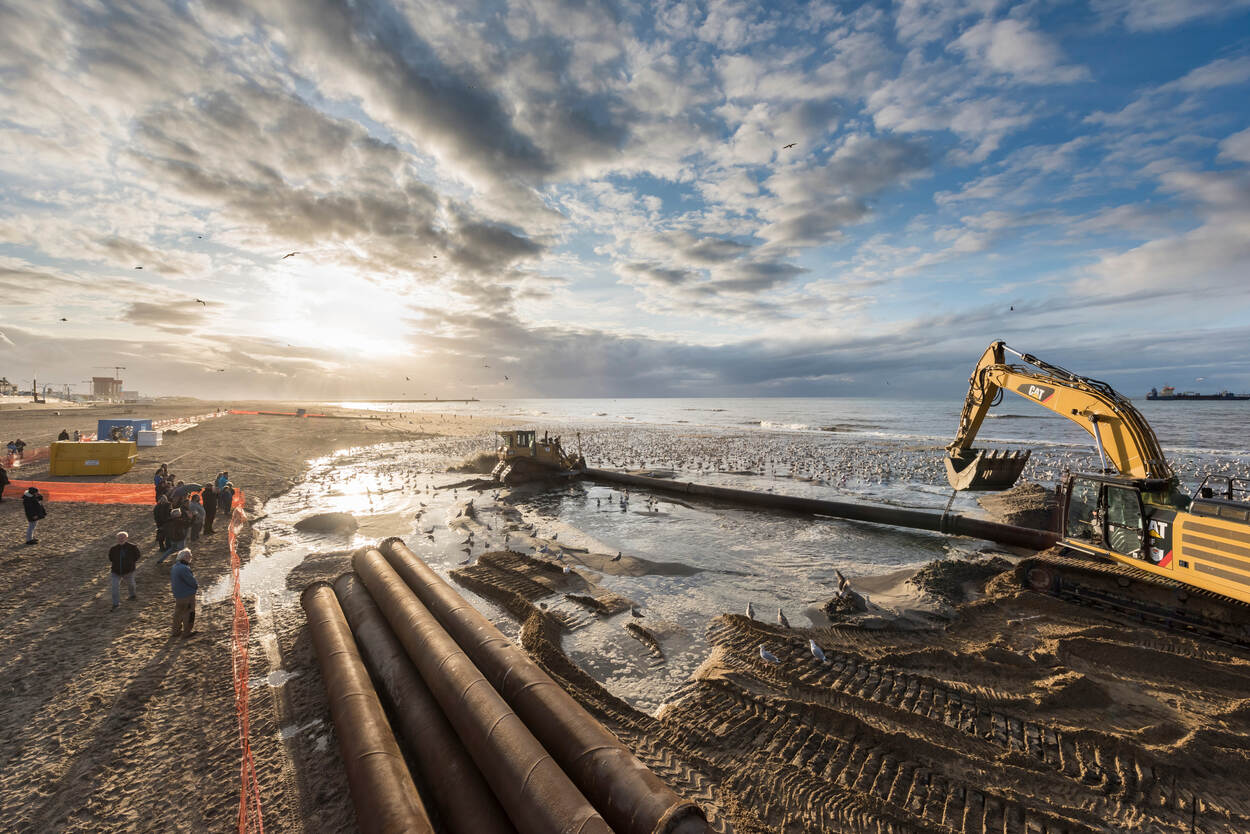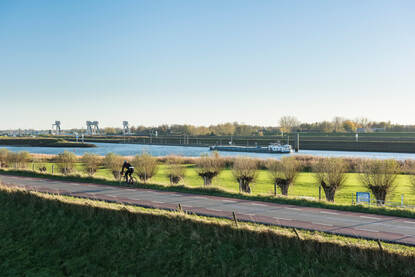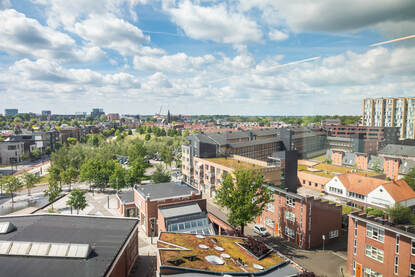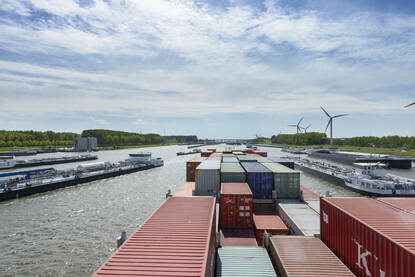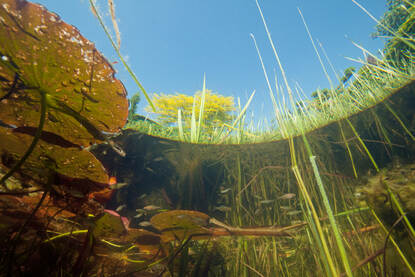The national government cannot realise the ambitions of the National Water Programme (NWP) on its own, as the 'water challenges' that the Netherlands faces are not isolated issues. They cannot be solved without a joint approach together with other sectors. Cooperation, also on an international level, is essential for our water management. Cooperation in programmes, projects and networks. And cooperation with other authorities, civic organisations, the business community and citizens. In addition, we want to work in an area-oriented manner to connect the different challenges for each area to arrive at integrated measures.
The formation of the NWP also required an integrated approach, with the national government working closely together with the Association of Regional Water Authorities, the national association of water companies Vewin, the Association of Provincial Authorities, and the Association of Netherlands Municipalities. The NWP was published in March 2022, together with its appendices.
Legal basis of the NWP
Under European legislation and the national Water Act, new national water plans must be developed every 6 years. Until 2022, the national government drew up a National Water Plan as well as a Management and Development plan for national waters every six years. For the period 2022–2027, these two plans were combined into one single programme. With this, the national government is anticipating the Environment and Planning Act.
Participation process
Local authorities and civic parties were involved in the development of the NWP from an early stage through a broad participation process (see figure below).
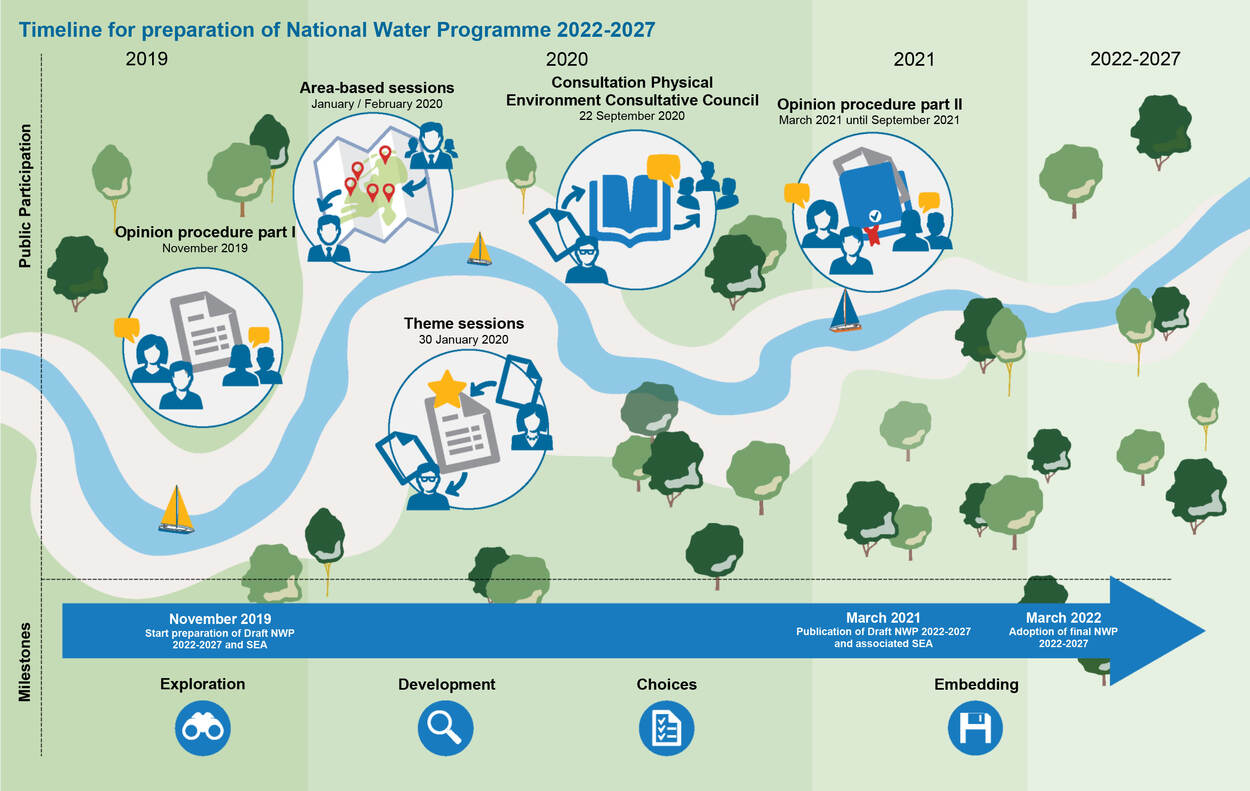
At the end of 2019, the proposal for drawing up the NWP was available for public consultation, together with the approach (Scoping Document) for drawing up the Strategic Environmental Assessment (SEA). This way, the environmental effects are considered in the decision-making process in their entirety. People could comment on the proposals for the subjects, the level of detail and the assessment framework for the SEA. They could also respond to the participation plan.
At the beginning of 2020, area-based and theme sessions were held, and the Physical Environment Consultative Council consulted various civic organisations. These sessions revealed what is happening in the different regions and sectors, with the aim of retrieving points of interest, problem areas and potential solutions for the different NWP themes.
Opinion procedure
The input from the consultations was incorporated into the Draft National Water Programme, which was published in March 2021. This was available for public consultation for six months, together with its appendices and the SEA. A total of 89 opinions were received on this Draft. These vary from sharing a vision to asking for fine-tuning. Questions were also asked for clarification. Several submitters argued for a stronger and more integrated directing role of the national government, especially with regard to complex spatial issues.
The opinions come from the Netherlands and various neighbouring countries and were submitted by citizens, local authorities, civic organisations and companies. They were assessed and integrated into the final NWP. The incorporation process is explained in more detail in the reaction paper. This also contains the cabinet's reactions to the opinions submitted, together with an explanation of the recommendations and assessments of the Draft NWP, as well as an outline of the planning and decision-making process.
North Sea Programme
Many of the opinions concerned the North Sea. For the North Sea Programme, an additional draft was prepared after publication of the Draft NWP. This Additional Draft comprises an amendment of Chapter 9 from the Draft North Sea Programme, in which wind energy areas in the North Sea were designated. This Draft North Sea Programme was available for public consultation between November and December 2021. A separate reaction paper was drawn up for this opinion procedure and the incorporation of opinions into the final North Sea Programme.
The structure of the NWP
The NWP contains two overarching chapters: one about the main points of water policy and implementation, and one that provides insight into financing. The rest of the NWP is divided into three parts:
- A part with policy per theme.
- A part with management and implementation by Rijkswaterstaat per theme.
- An area-specific part with policy and management and implementation per area.
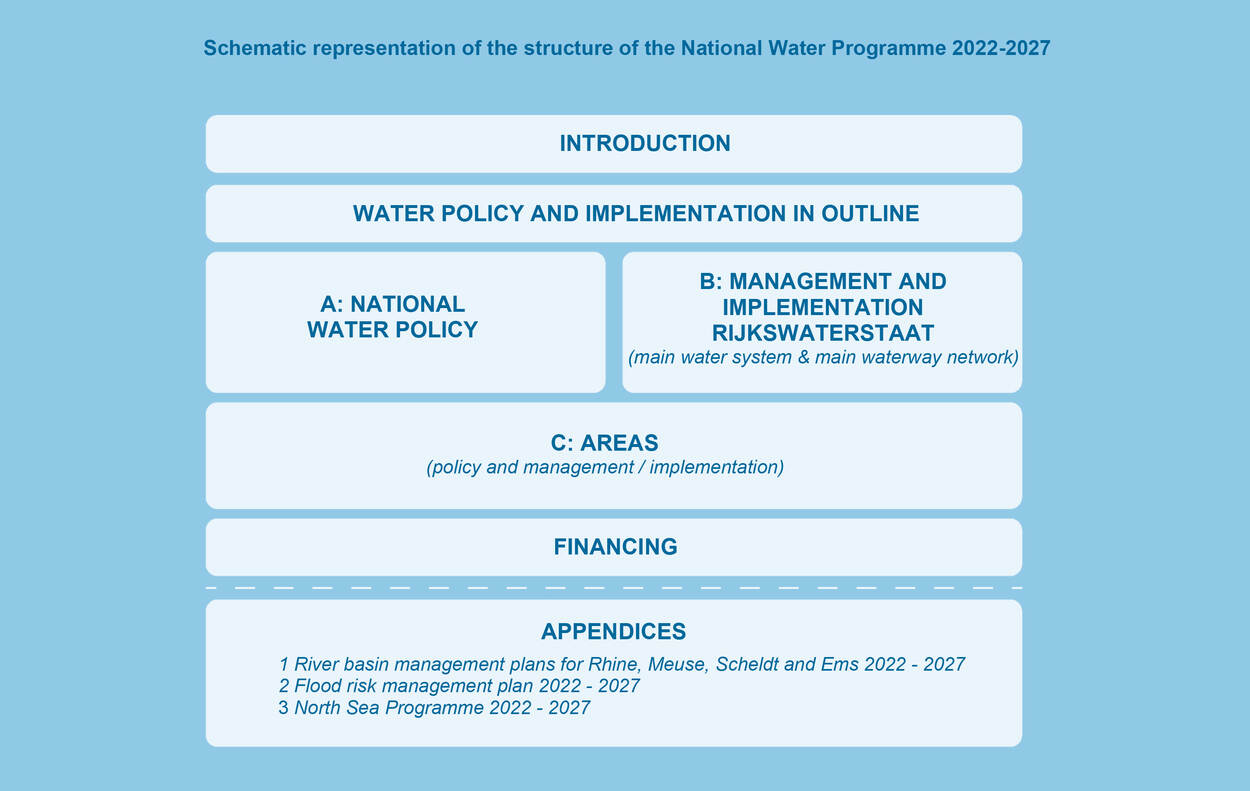
Appendices to the NWP
Key elements of the NWP are the river basin management plans, the flood risk management plan, and the North Sea Programme. These have been included as statutory appendices.
- On the basis of the Water Framework Directive (WFD), River Basin Management Plans (RBMPs) are drawn up every 6 years for the Dutch parts of the Rhine, Meuse, Scheldt and Ems river basin districts. These plans contain the objectives, the water quality situation and the measures to further improve water quality.
- The Flood Risk Management Plan describes the objectives and measures of flood risk management in the Netherlands.
- The North Sea Programme combines, among others, the challenge for wind energy on the North Sea with nature development (increase in biodiversity), sustainable fisheries and space for shipping. Under the Marine Strategy Framework Directive, measures are implemented to improve the environmental status of the North Sea.
